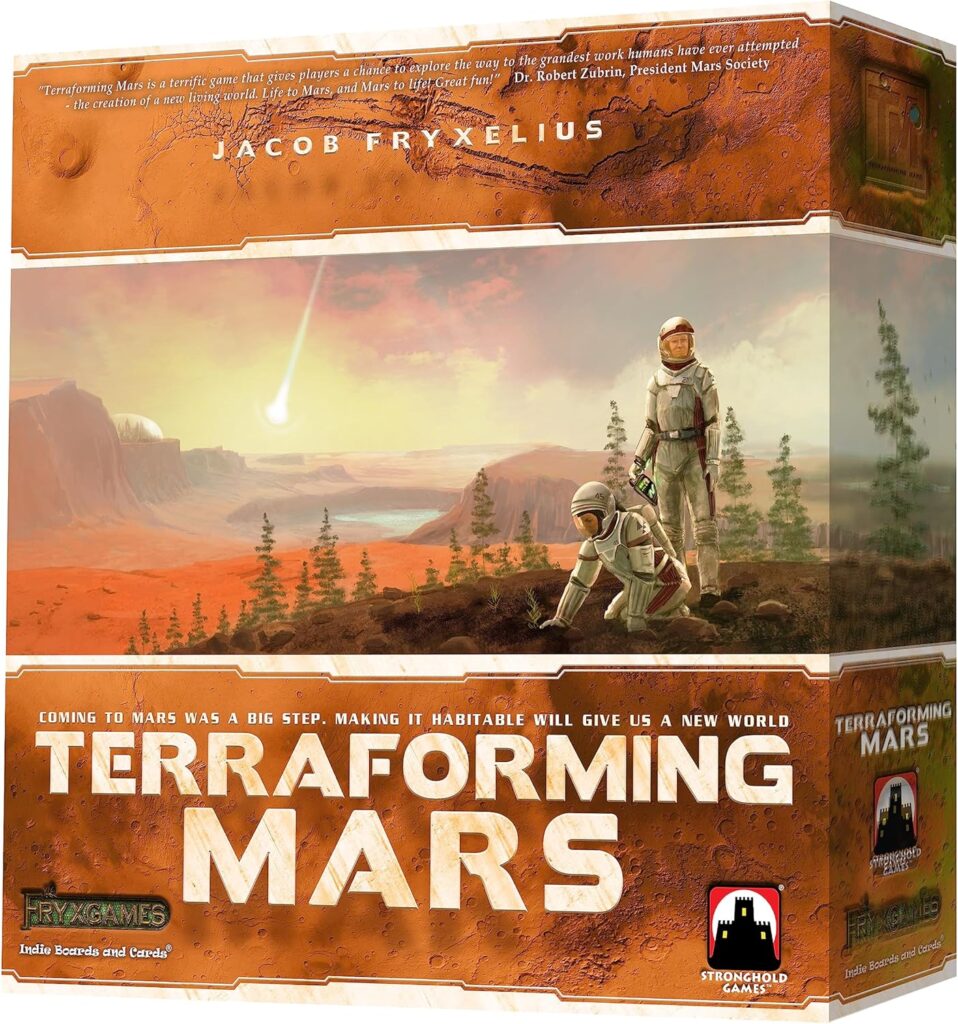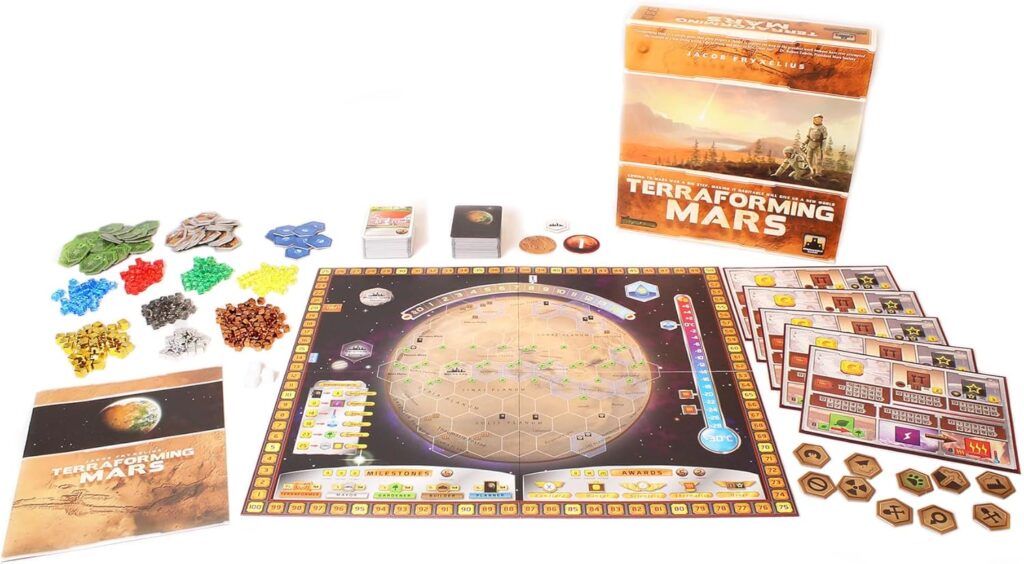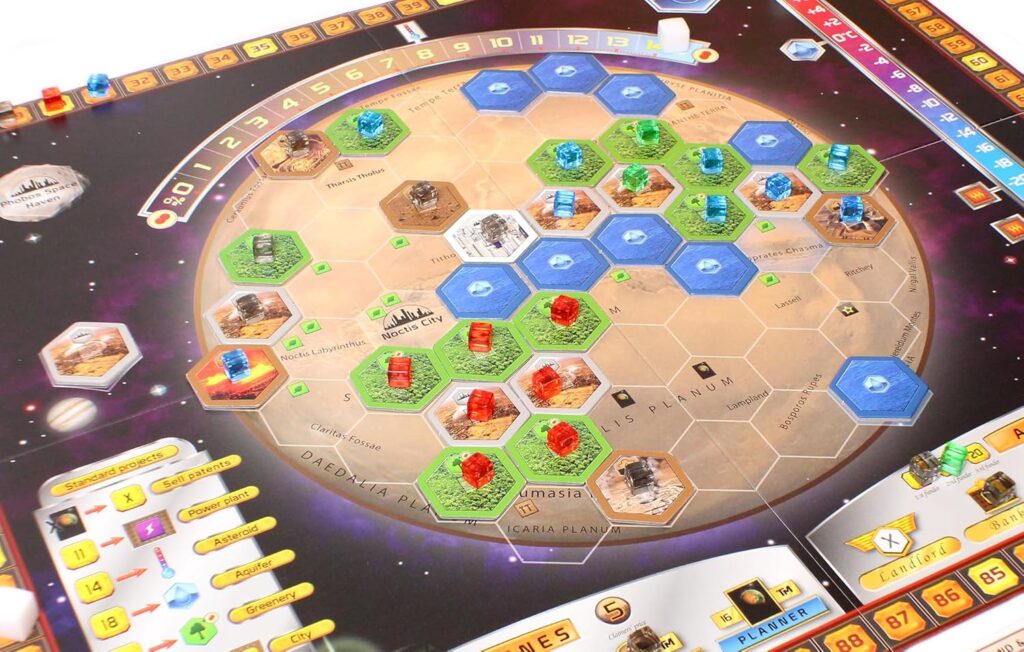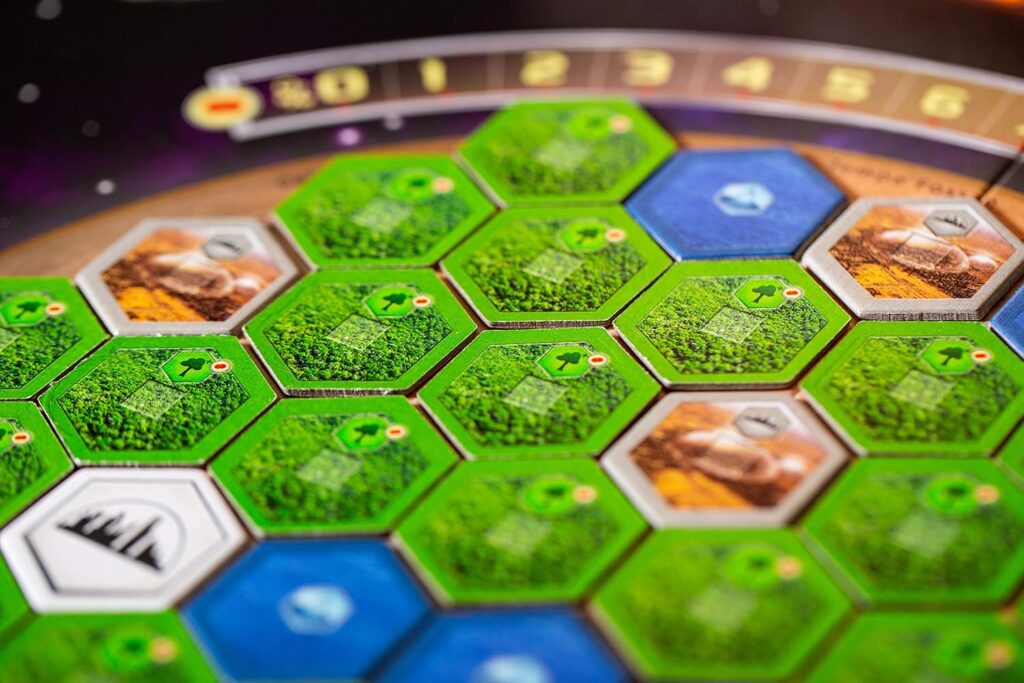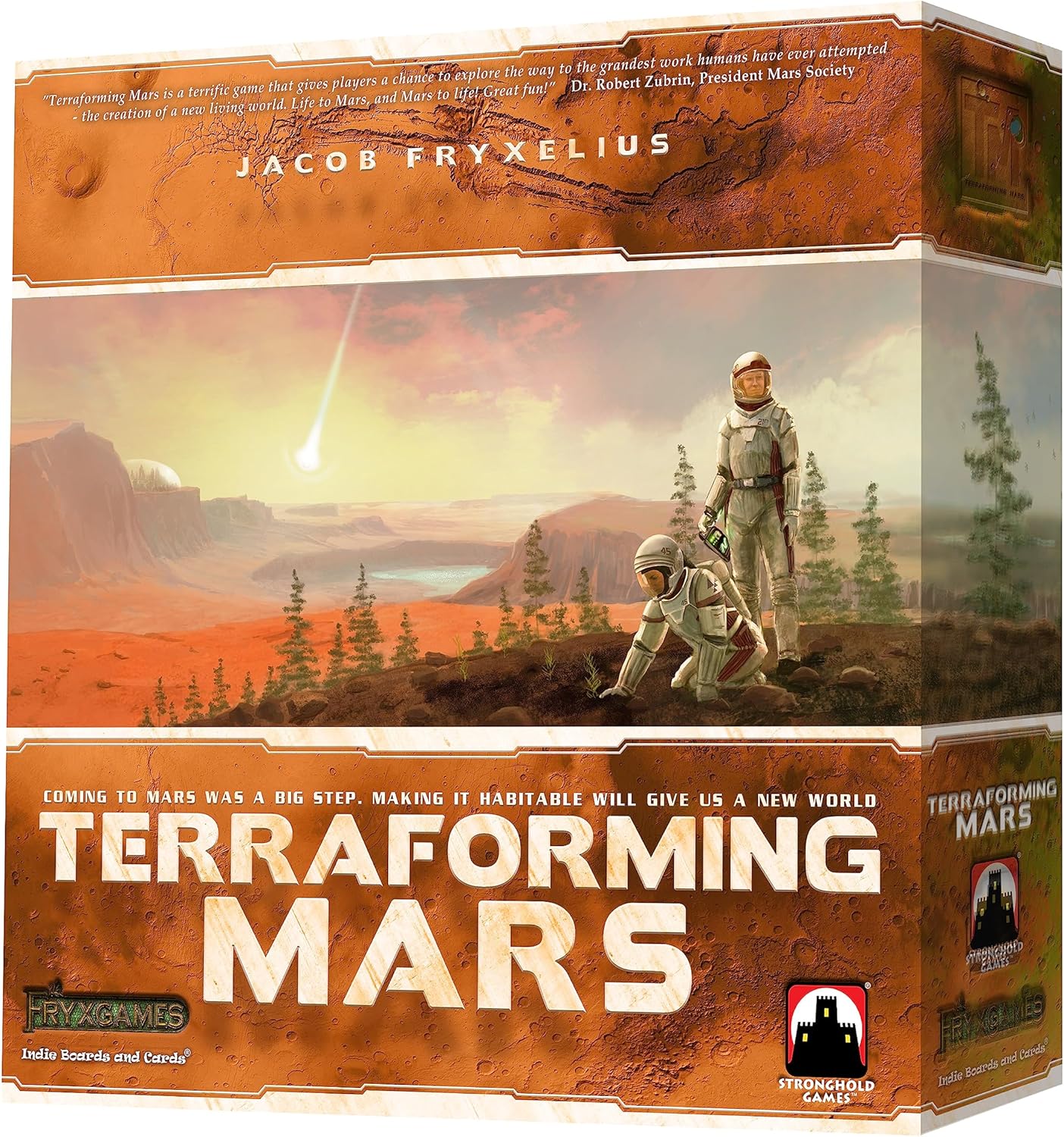Terraforming Mars invites players into a sprawling, strategic race to make the Red Planet habitable. Over the course of six generations, players manage corporations, draft and play project cards, and strategically raise global parameters such as temperature, oxygen level, and ocean coverage. This melding of resource management, strategic planning, and tableau development provides a deep, thematic experience with meaningful strategic choices at every turn.
The game balances pacing, complexity, and thematic resonance exceptionally well. You’ll juggle energy, heat, plants, and steel while choosing whether to fund research holdings, build cities, or place greenery. Later in the game, expert players can engineer intricate engine combos—such as producing heat via energy conversion or massive plant production for major oxygen gains—that reward careful setup. Though each generation takes longer as boards fill, the sense of momentum and the visual transformation of Mars create a compelling, immersive gameplay arc.
Visual Design & Theme
Terraforming Mars uses strong visuals and a clear interface to ground its mechanics in theme. Card art depicts retro-futuristic technologies, corporate logos, and sci-fi terrain—each richly detailed and evocative. The personal player boards track tile placement and resource storage in a straightforward grid, keeping things informative without clutter.
Mechanically, the theme permeates every element: raising temperature warms the planet, building oceans turns empty hexes into water tiles, and laying forests increases oxygen. Players visibly transform Mars throughout the game, reinforcing the narrative of planetary engineering. The result is a cohesive and satisfying representation of terraforming in action.
Production Value
The game’s components feel robust and functional. The laminated player boards and project cards are durable, with clearly printed fonts and iconography. The resource cubes—small colored wooden cubes for energy, heat, titanium, and others—are practical and straightforward, though some replacements with custom tokens can enhance tactile feel.
The game’s box is modular and surprisingly well-designed, even accommodating expansions in the same packaging. A few fans substitute in upgraded tokens or metal coins for a more premium experience, but the base game components are solid and serviceable, supporting repeated plays with minimal wear.
Ease of Learning
Terraforming Mars has a moderate to steep learning curve. Learning all the iconography and project card options can take a few rounds, and beginners may need reference sheets. Draft strategy, resource timings, card interactions, and global parameter milestones all contribute to depth.
That said, once players learn how to read cards and tally income growth, the core gameplay loop becomes intuitive. Turbocharged engines, heat-to-power conversions, and mega project chains gradually become within reach. It’s a game that takes time to master, but rewards players who invest in studying synergies and planning ahead.
Setup & Teardown Time
Setup is the most time-consuming part of Terraforming Mars. Distributing player boards and projects, sorting the decks, creating the global parameter display, and stacking resource cubes typically takes 10–12 minutes with experienced groups—and longer for new players.
Teardown also takes time but can be streamlined with component trays. Reorganizing cards and refilling resource tracks is manageable with designated storage systems. Though not ideal for quick pick-up-and-play, Terraforming Mars fits well in planned gaming sessions with a full table setup.
Gameplay Pace
Terraforming Mars unfolds over six generations that gradually ramp in complexity and board presence. The early game is methodical, as players look to establish basic income like steel production or heat generation. Mid-game is when engines build, synergies activate, and competition for space becomes tangible.
Late-game rounds often take longer as players calculate scores and optimize tile placement or bonuses. While this can slow the pace, it also heightens tension—endgame decisions are consequential and impactful. The balance between enduring setup and satisfying payoff ensures most players feel the time invested is worthwhile.
Replayability
With well over 200 unique project cards, multiple corporations, and a variety of milestones and awards, Terraforming Mars offers extraordinary replay value. Each game feels novel, as no two card sets or corporate pairings are alike. Expansions like ‘Hell & Elysium’, ‘Venus Next’, and ‘Turmoil’ further reshape strategies and narrative context.
Players can explore specialized strategies—terraforming heavy builds, space-oriented tactics, or economic engine dominance—or combine modules to tailor game complexity. Terraforming Mars remains engaging even after dozens or hundreds of plays.
Conclusion
Terraforming Mars stands as a heavyweight in strategy gaming—its blend of resource management, engine-building, and thematic world-building creates a rich, satisfying experience. It demands attention and planning, rewarding players with powerful payoff and a tangible sense of planetary progression. While setup and complexity require commitment, the depth and variability of each play make the investment worthwhile. It’s a modern classic for groups who appreciate cerebral gameplay and thematic immersion.

